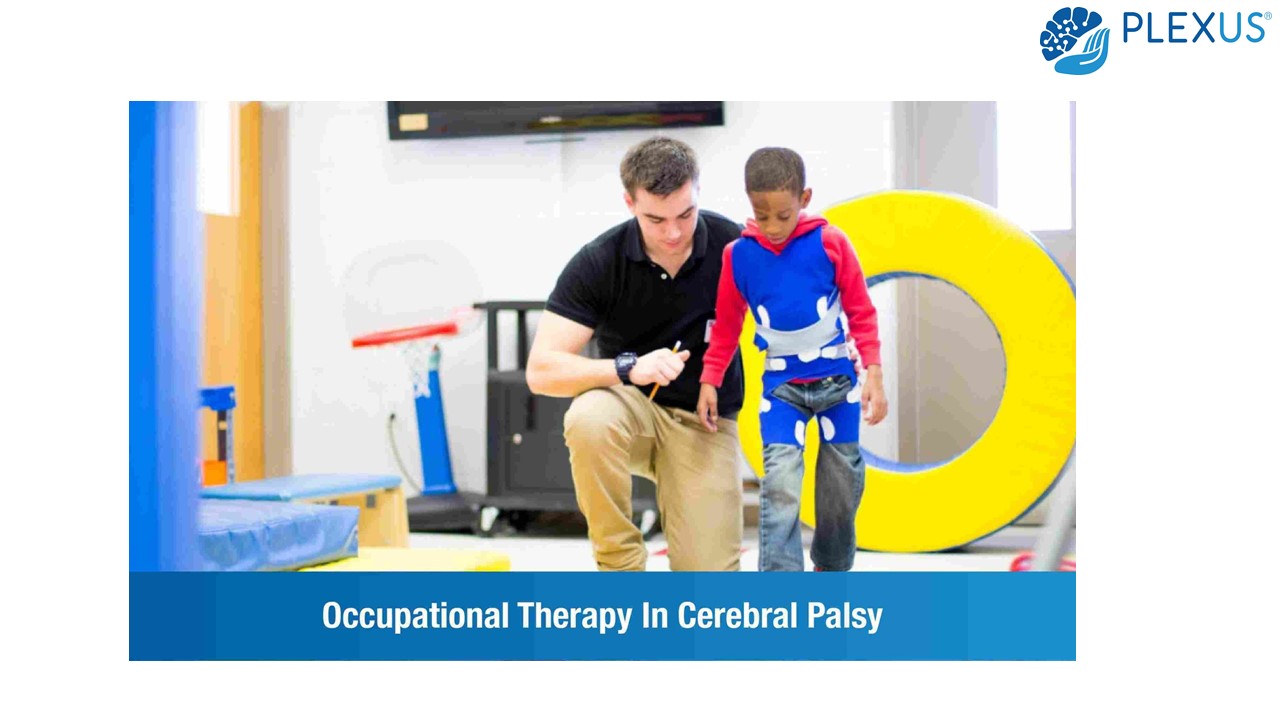Occupational Therapy in Cerebral Palsy - PowerPoint PPT Presentation
Title:
Occupational Therapy in Cerebral Palsy
Description:
Occupational Therapy and Cerebral Palsy involves developing one’s ability to perform daily functions and activities. CP occupational therapy aims at improving one’s strength, dexterity, and coordination when performing day-to-day activities. It also helps in improving cognitive abilities such as decision-making, problem-solving, reasoning, perception, memory, etc. In this way, simple day-to-day tasks such as eating, bathing, brushing teeth can be performed with relative ease. – PowerPoint PPT presentation
Number of Views:39
Title: Occupational Therapy in Cerebral Palsy
1
(No Transcript)
2
Understanding Cerebral Palsy
- The word cerebral means relating to the brain,
while palsy means weakness or problems relating
to muscle and its movement. - Cerebral palsy (CP) are a group of conditions
that are brought on by faulty brain development,
often before to birth. - It is a condition that impairs posture, muscular
tone, and/or movement. - Therefore, cerebral palsy affects the part of the
brain that controls the ability to move muscles.
3
Types of Cerebral Palsy
- Spastic Cerebral Palsy This is the most common
type, affecting almost 80 of the patients. It
affects the muscles, making them stiff (spastic),
causing exaggerated reflexes and muscle spasms.
It often entails walking abnormalities and may
sometimes lead to paralysis. - Dyskinetic Cerebral Palsy This type causes
problems in controlling body movements. The
muscles either become too tight or too loose.
Movements of the arms and legs become
involuntary, jerky, or even slow and writhing.
This causes difficulty in movements such as
sitting, crawling, or walking. In some cases, it
may also affect the face and the tongue, making
it difficult to frown, eat, or talk. - Ataxic Cerebral Palsy This is the least common
type. This form of cerebral palsy affects the
balance and coordination of the person. It
affects movements such as walking and fine motor
skills such as grasping objects, writing, etc. - Hypotonic Cerebral Palsy This type greatly
reduces the muscles tone, making them overly
relaxed and floppy. The weakened muscles make it
difficult to sit up straight. Children affected
by this type may have trouble breathing,
speaking, have poor reflexes or walking
abnormalities.
Mixed Cerebral Palsy Some people may experience
symptoms of more than one type of cerebral palsy.
In most cases, it is a combination of spastic and
dyskinetic cerebral palsy.
4
Symptoms of cerebral palsy
- Muscle movement disorders such as stiff muscles
(spasticity), exaggerated reflexes, tremors, or
involuntary jerking movements. - Lack of muscle coordination and balance (ataxia).
- Variations in muscle tone, where muscles become
too stiff or too floppy. - Difficulty in walking.
- Difficulty in the development of fine motor
skills such as sitting up, crawling, holding onto
and picking up objects. - Delay in speech development.
- Difficulty in eating, excessive drooling, and
problems with swallowing. - Delayed growth.
- Intellectual disabilities.
- Neurological problems such as seizures
(epilepsy), abnormal touch, or pain sensations,
etc. - Bladder and bowel problems.
- Mental health issues such as behavioral problems
and mental disorders.
5
Causes of Cerebral Palsy
- Cerebral palsy usually occurs before birth and in
some cases, at birth, or early infancy. It is
caused due to abnormal brain development, or
damage caused to the developing brain - Maternal infections that can occur in the womb,
directly affecting the fetus. - Gene mutations that cause problems during brain
development and lead to genetic disorders. - Head injuries due to accidents, falling, or child
abuse. - Bleeding in the brain (intracranial hemorrhage).
- Brain infections leading to inflammation in or
around the brain. - Lack of oxygen reaching the brain during labor
and delivery. - Severe jaundice in infants.
6
Treatments for cerebral Palsy
- Although cerebral palsy cannot be cured, a
combination of treatments can greatly help the
child in achieving a long and healthy life. - Medications, assistive aids, therapy, and surgery
can greatly help in managing symptoms, relieving
pain, and making the child independent in
performing daily chores and activities, thereby
improving the quality of life. - Therapies such as Stem Cell Therapy, Physical
Therapy, Occupational Therapy, Speech Therapy,
etc. can be included in the treatment program. - Research increasingly suggests that Occupational
Therapy is significantly beneficial for children
with cerebral palsy in a number of ways.
7
Occupational Therapy and Cerebral Palsy
- Occupational Therapy and Cerebral Palsy involves
developing ones ability to perform daily
functions and activities. - CP occupational therapy aims at improving ones
strength, dexterity, and coordination when
performing day-to-day activities. It also helps
in improving cognitive abilities such as
decision-making, problem-solving, reasoning,
perception, memory, etc. - In this way, simple day-to-day tasks such as
eating, bathing, brushing teeth can be performed
with relative ease.
8
Benefits of occupational Therapy
- Occupational therapy for CP can help with issues
in various ways - Performing everyday tasks independently
- Adapting better to abilities
- Developing thinking and learning skills
- Coping and responding to the demands and
challenges of everyday life - Coping with emotions and adapting
9
Techniques and exercises are used in occupational
therapy with cerebral palsy
- Improving fine motor control These exercises
improve hand dexterity. Simple exercises such as
grasping and sorting toys, sorting coins, and
making jewelry. - Upper body strength and stability
activities These activities focus on
strengthening and stabilizing the trunk and upper
body. Simple activities that increase strength
and improve balance such as crawling. - Bilateral coordination This focuses on improving
control of both sides of the body at the same
time. Activities and movements such as pulling
apart constructive toys, catching a ball with two
hands, riding a bike, etc. - Improving visual motor skills These activities
help in improving hand-eye coordination.
Activities include drawing, stringing beads,
catching and throwing the ball, etc.





























![[PDF] Pediatric Skills for Occupational Therapy Assistants 5th Edition Kindle PowerPoint PPT Presentation](https://s3.amazonaws.com/images.powershow.com/10085915.th0.jpg?_=20240726126)
![[READ]✔️ Pediatric Skills for Occupational Therapy Assistants 5th Edition PowerPoint PPT Presentation](https://s3.amazonaws.com/images.powershow.com/10128477.th0.jpg?_=202409101012)
